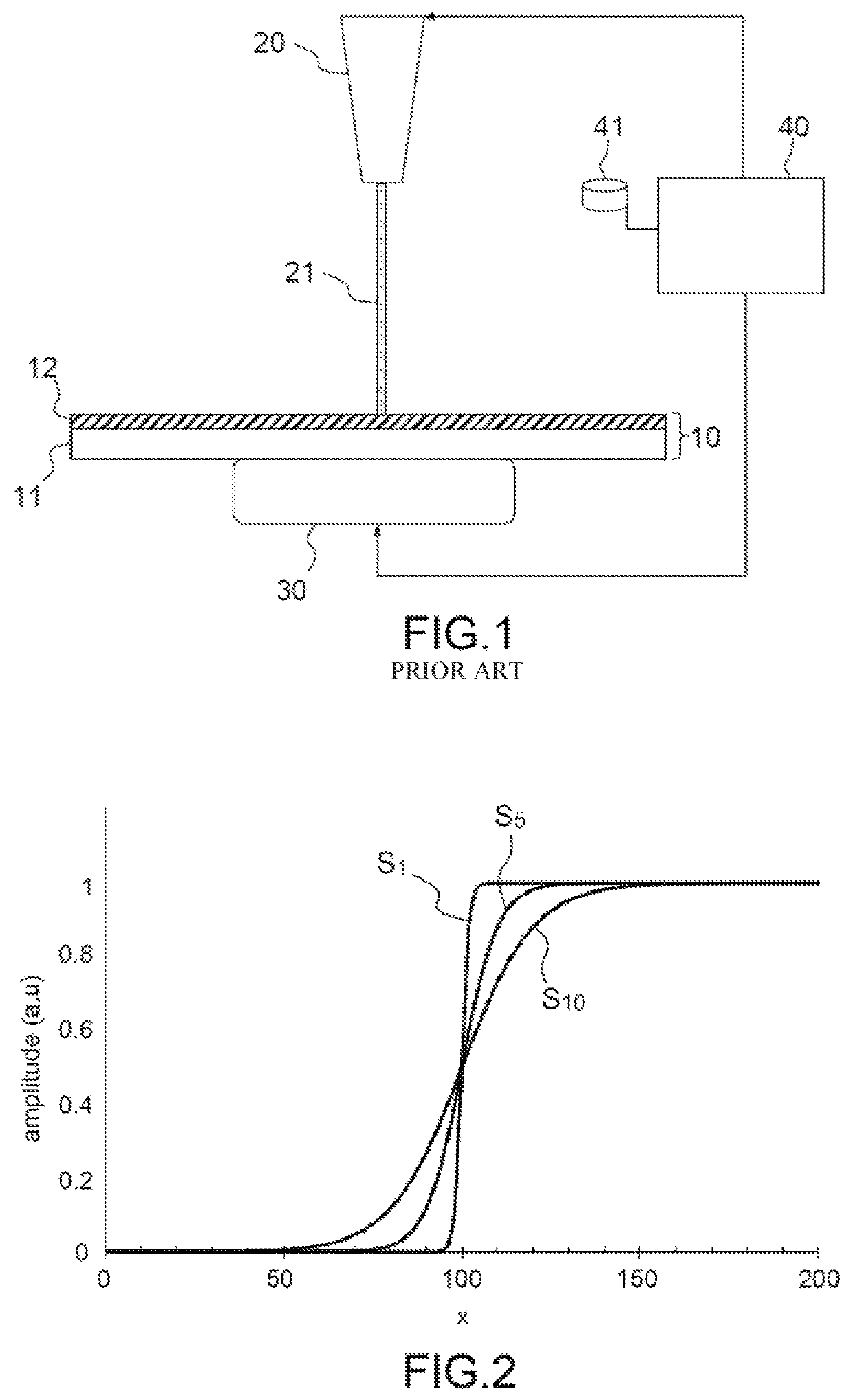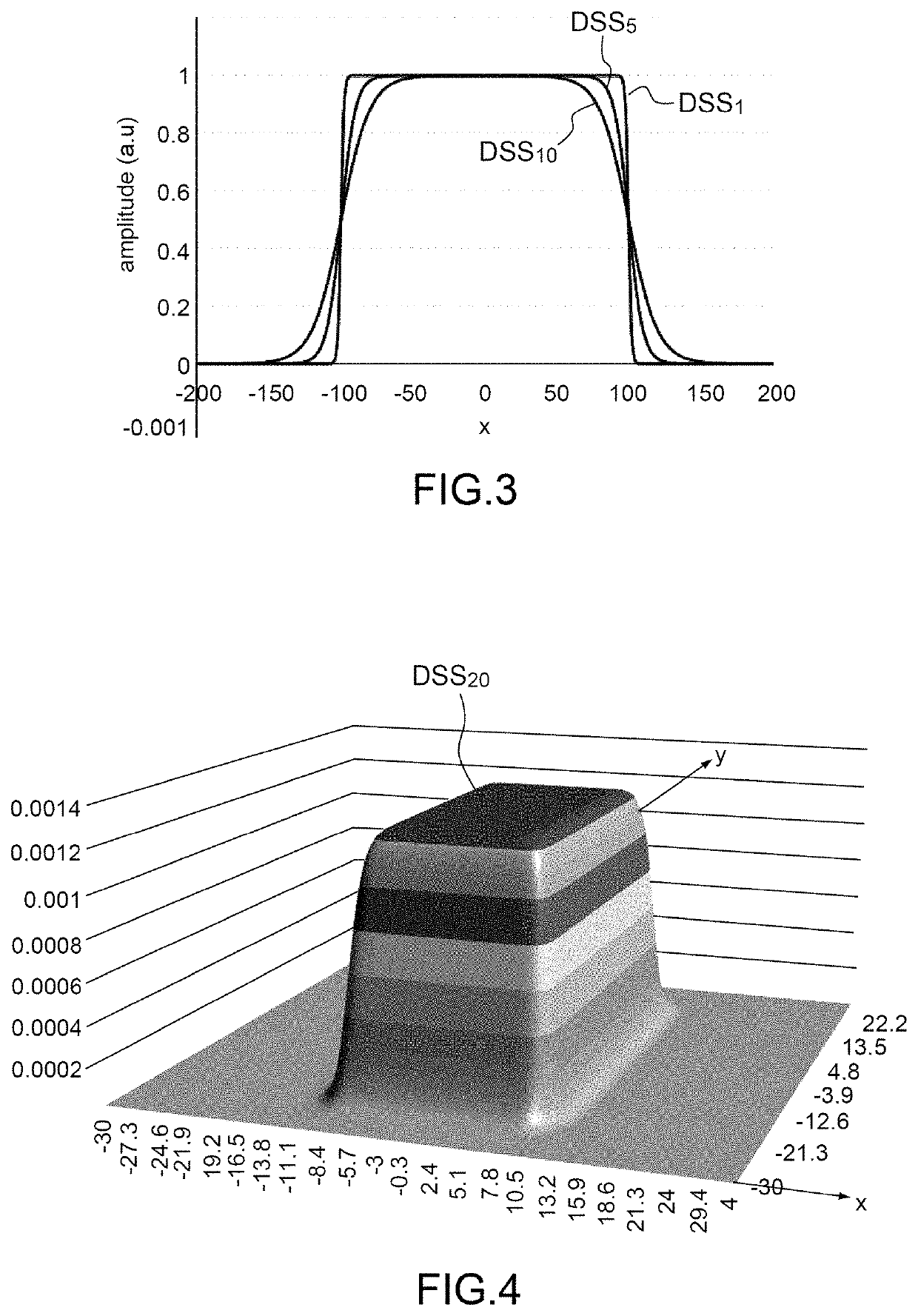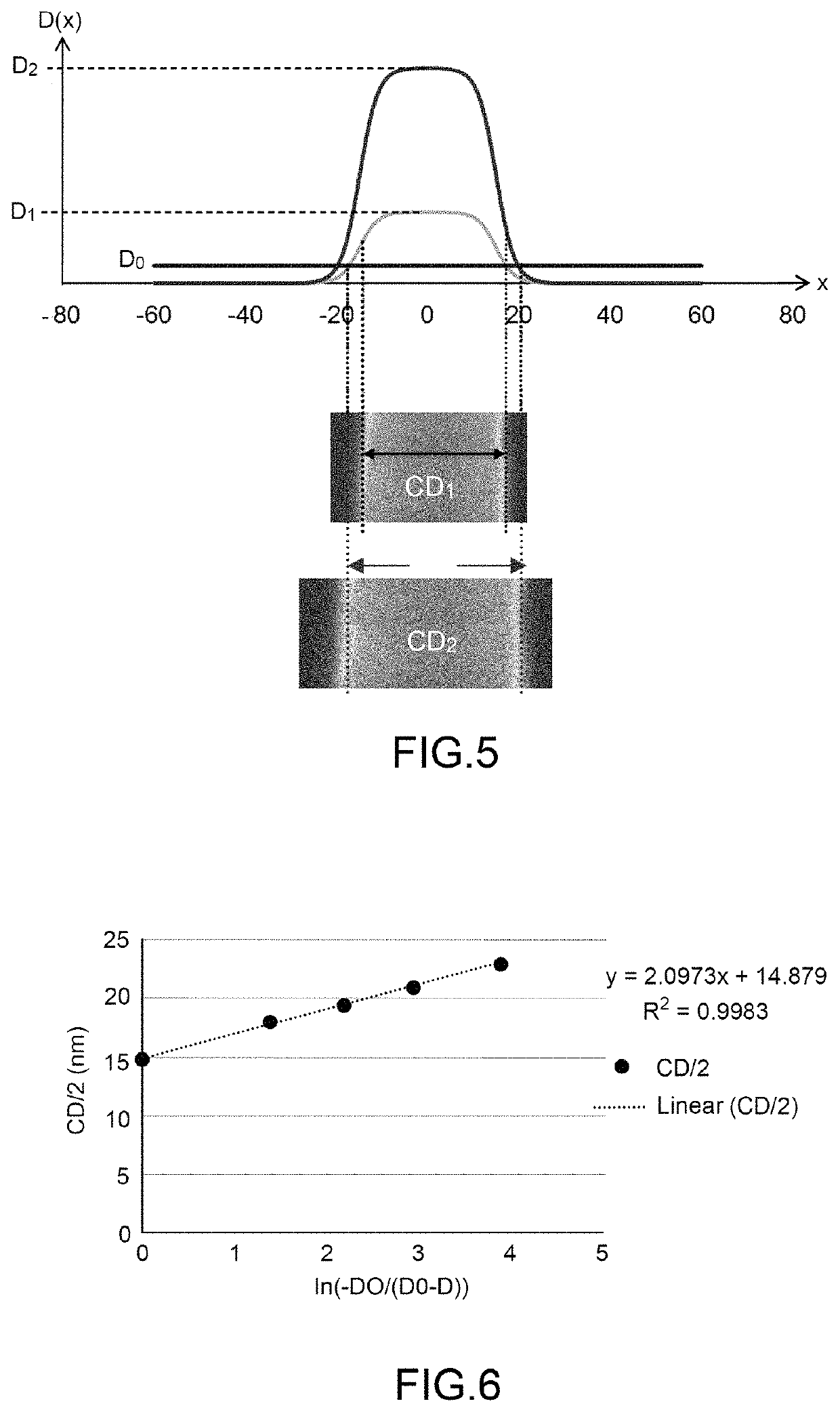Method for projecting a beam of particles onto a substrate with correction of scattering effects
- Summary
- Abstract
- Description
- Claims
- Application Information
AI Technical Summary
Benefits of technology
Problems solved by technology
Method used
Image
Examples
Embodiment Construction
[0044]Generally, a sigmoid function is a function that has two horizontal asymptotes, which pass gradually from one to the other and that have an inflection point. In a more restricted sense, this term designates the function
[0045]S(x)=11+e-(x-x0) / k(2)
which is also called the logistic function.
[0046]Function (2) depends on two parameters: x0, which determines the position of the inflection point, and k, which determines the steepness of the transition region between the two asymptotes (more precisely, 1 / k is the value of the derivative of S(x) at the inflection point x=x0). FIG. 2 shows graphs of three logistic curves with x0=100 and k=1 (curve S1), k=5 (curve S5) and k=10 (curve S10).
[0047]A double sigmoid function is given by the difference between two sigmoid functions of the type of equation (2). In particular, if the difference between two sigmoid functions having the same parameter k and parameters x0 of same absolute value but opposite sign is calculated, a function is obtai...
PUM
 Login to View More
Login to View More Abstract
Description
Claims
Application Information
 Login to View More
Login to View More - R&D
- Intellectual Property
- Life Sciences
- Materials
- Tech Scout
- Unparalleled Data Quality
- Higher Quality Content
- 60% Fewer Hallucinations
Browse by: Latest US Patents, China's latest patents, Technical Efficacy Thesaurus, Application Domain, Technology Topic, Popular Technical Reports.
© 2025 PatSnap. All rights reserved.Legal|Privacy policy|Modern Slavery Act Transparency Statement|Sitemap|About US| Contact US: help@patsnap.com



